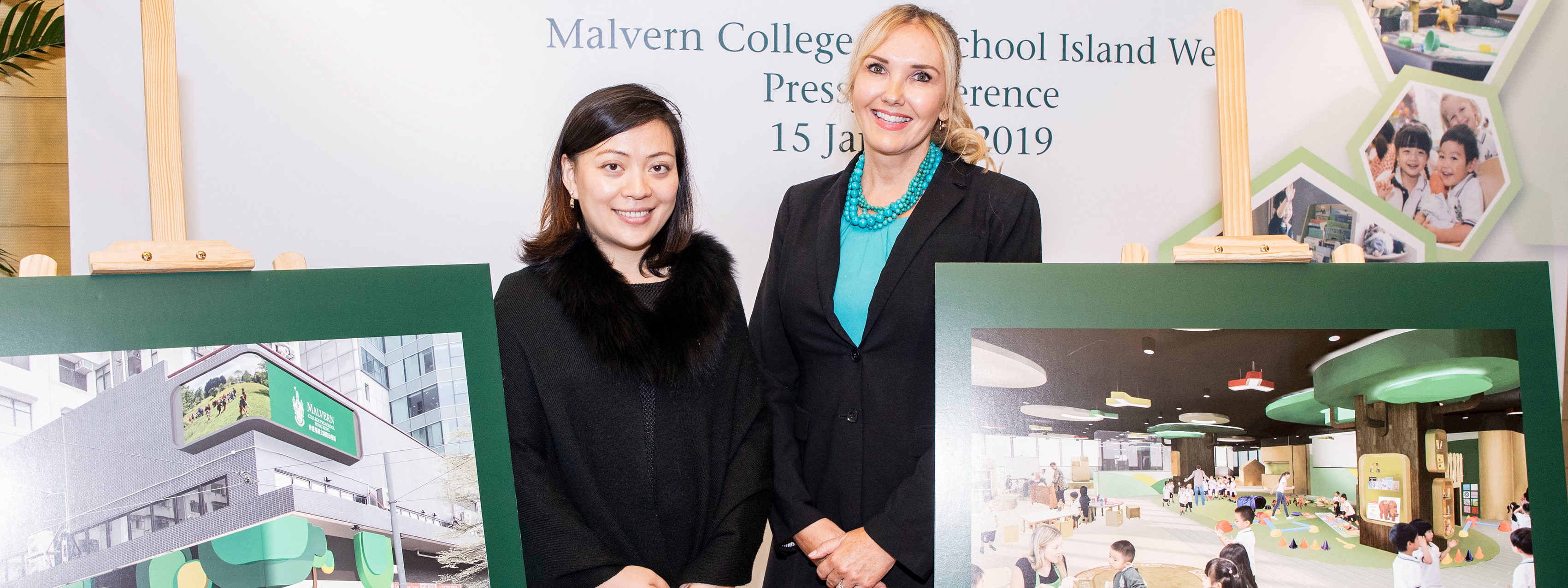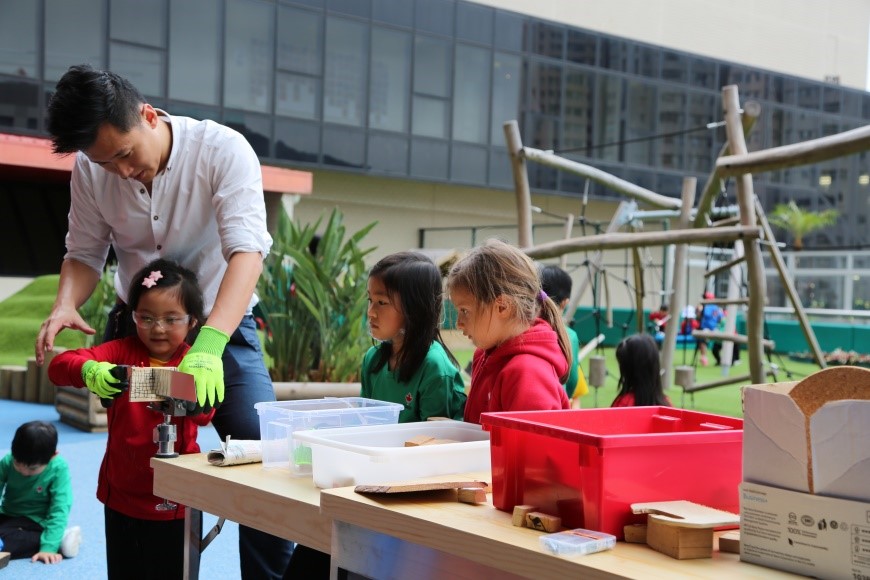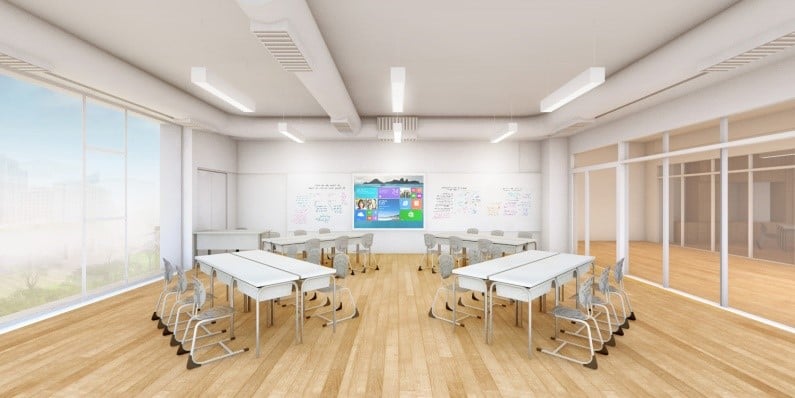Contact Us
Fill in the form below or you can also visit our contact us page.

International schools in Hong Kong are beginning to set new standards with their architectural designs that focus on the best learning environment for students. Some of Hong Kong’s well-established and newly-developed international schools have spaces that promote co-operation and inspire students to become more engaged in a particular subject.
A culture of creativity and discovery in Education: Makerspaces
Schools such as Canadian International School, Hong Kong International School, Nord Anglia International School, The Harbour Schooland Yew Chung International School have active Makerspaces and inspirational learning spaces that promote innovation, design, technology, problem-solving and teamwork using such things as 3-D printers, woodwork and hand tools.
So what is a makerspace? Well, it can be clearly defined as a place where students can gather to create, invent, explore and discover, using a variety of tools and materials. “Makerspaces are not about the tools; they’re about enabling making and creating”.
No two school makerspaces are exactly alike, nor should they be. Makerspaces are as unique as the school cultures they represent. Makers are artists, crafters, knitters, seamstresses, builders, programmers, engineers, hackers, painters, woodworkers, tinkerers, inventors, bakers, graphic designers and more.
We know that in today’s job market there’s increasing need for people with 21st-century skills, especially the ability to innovate, collaborate and respond to change in creative ways. By teaching students to be collaborative and creative, schools are sharing the same goals as employers.
MAKERSPACES
Canadian International School of Hong Kong emphasizes the importance of Makerspaces rather than Makerspace, enabling innovation to be embedded into everyday learning across the whole curriculum. While dedicated spaces such as The Hive and OneDoor, equipped with Virtual Reality, 3D printers, laser cutters and other state of the art equipment, provide a focus for larger design and community-based projects, students have access to traditional tools and the latest technology throughout the school.
“From as young as age 5, students are using the Design Thinking Model, from Stamford University D-School, to define real life problems, develop ideas, prototype and test solutions. To ensure that everyone has access to the resources they need to support this process, bespoke Maker Carts, designed by CDNIS Blueprint Club students and fabricated locally, are equipped to meet the specific needs of individual projects and pushed out into classrooms around the school. Small Makerspaces, around the Lower School, are also being designed and built by the students themselves, while the one-to-one robotics programme ensures that every child from Grades 4-6 has access to a robot in their own classroom,” says Lower School Principal Dr. Helen Kelly.

At Hong Kong International School (HKIS), their newly-designed makerspace, The Wonder Lab, is created specifically for early elementary students to explore, discover and cultivate their curiosity. It is the hub for STEM-related activities and technology projects, inspired by the Reggio Emilia approach to learning. It consists of a think and design zone for students to plan projects, a builder’s workshop with real tools and workbenches, and a broadcasting/sound studio for students to document their learning. Their Innovation Space allows students to think and make whatever they want. Opportunities for designing, building, playing, creating are all part of what makes this space a hub of learning. Electronics, robotics, coding, programming and more expands the boundaries of children's thinking through projects and experiences.
At Nord Anglia International School, their innovative, interdisciplinary approach to teaching Science, Technology, Engineering, Art and Maths (STEAM) inspires students to create and build through hands-on, cross-functional activities and challenges and to ask intelligent questions about the topics they are curious about. Developed in collaboration with the Massachusetts Institute of Technology (MIT), their curriculum and newly opened Maker Space encourages students to work together to find innovative and creative solutions to complex problems. Broken down in to three distinct areas the space encourages groups of students to work collaboratively and share ideas while sitting on the raised amphitheater or visualising ideas on the full-length white board and Lego walls. Students are encouraged to create solutions to problems in the workshop area, which is equipped with the latest in 3D printing and electronics technology, and present ideas through the use of high quality videos created in the green screen and media room.

In The Harbour School’s Makerspace, first graders have made sound waves, third graders have made wave machines to illustrate erosion, and middle school students built an entire life-sized furniture unit for a subsidized housing flat! Another dedicated space at The Harbour School is its marine wet lab, complete with a touch tank for younger students to interact with marine animals, where students can create or participate in scientific experiments related to the ocean. “In a Makerspace, wet lab, art studio or black-box theatre, the learning space itself creates an invitation to become engaged in a different way with subject matter that has been introduced. By taking the learning experience out of the classroom itself, we can encourage students to think differently, take risks, persevere through a problem and work with others in ways that create lasting memories and a love for learning”, says Jadis Blurton, Director & Founder of The Harbour School.

INNOVATIVE LEARNING SPACES
At Yew Chung International School (YCIS) the recent secondary campus renovations have been transformed for flexible and collaborative learning. Students and teachers use the open-air podium space offering non-classroom space and an openness to inspire. The created areas lend support to: observational learning, information-based learning, project-based learning, spontaneous learning, peer and individual learning. With a range of seating and gathering options, students often have the ability to select the most optimum and beneficial way for them.

Karrie Dietz, Head of Stamford American School, says, “Inspiring students to be innovative, collaborate and develop a love of learning is important. We believe the learning environment plays an important role in contributing toward this inspiration and therefore we have been very purposeful in the design of our new learning spaces.” The spaces have been designed to create a modern feel, selecting colors carefully and including a lot of windows to maximize natural light. “We also believe it is important to provide easy access to innovative resources to promote exploration, and so therefore technology tools are not only available in our well-resourced STEMInn lab but also in classrooms.”

A state-of-the-art, adaptable environment to suit many different learning scenarios is at the heart of the new Shrewsbury International School interior space. Principal, Ben Keeling, explained, “We thought deeply about the different ways in which children learn and engage throughout and beyond boundaries marked within a school. Careful consideration of communal spaces will encourage discussion and provide teaching staff with the opportunity to build interconnected learning communities.” Classrooms will be equipped with the latest technology to further enhance collaborative opportunities.

It’s wonderful to know that all these new learning spaces are coming into existence in Hong Kong schools. From my own personal experience, I know that students need to be in classrooms that inspire them—spaces that are light, airy, and filled with examples of work that they aspire to do. Each school will have a variety of spacious classroom settings and each classroom will be set up based on what is necessary to meet learning objectives.
But it’s important to note that schools will prioritize configuring classes to inspire learning first and foremost, and, where appropriate, reflect the diversity of environments that students are exposed to outside a school setting. Nowadays, students have beautiful spaces that make them feel good to be at school. And as we know, may it be as an educator or parent, is that when students are engaged in their activity and they feel comfortable in their space, deeper learning happens.